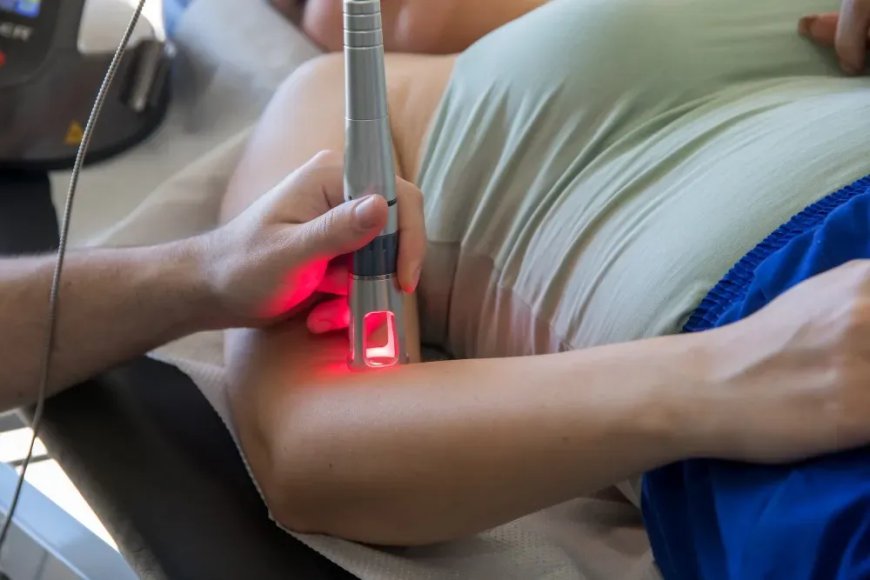Unlocking the Healing Power of Laser Therapy for Pain: A Breakthrough in Non-Invasive Treatment
laser therapy for pain

In today’s world of modern medicine, patients seeking relief from chronic pain and injury have a wide array of options to consider. One of the most innovative and effective methods that is gaining traction in pain management is laser therapy for pain. This non-invasive treatment has been a game-changer for individuals struggling with a range of conditions, from musculoskeletal disorders to post-surgical recovery.
At the heart of this innovative treatment is therapeutic laser therapy, also known as low-level laser therapy (LLLT). This technique uses specific wavelengths of light, typically produced by low-level lasers or light-emitting diodes (LEDs), to stimulate healing at the cellular level. But how does it work, and why is it so effective?
What is Laser Therapy for Pain?
Laser treatment involves the application of low-intensity laser light to injured or painful areas. Unlike high-powered lasers used in surgical procedures, the lasers used in therapeutic applications are designed to promote tissue healing without causing harm. When the laser light is directed to the target area, it penetrates the skin and reaches the underlying tissues. The light energy is absorbed by the cells, stimulating a series of biochemical reactions that increase cellular metabolism and promote the repair of damaged tissues.
This process, often referred to as photobiomodulation (PBM), helps reduce inflammation, improve circulation, and enhance the regeneration of cells, which in turn accelerates healing and alleviates pain. With its deep-tissue penetration, laser therapy can treat a variety of conditions ranging from acute injuries like sprains and strains to chronic pain conditions such as arthritis and tendonitis.
The Benefits of Laser Treatment
The benefits of laser therapy for pain are numerous, making it an attractive option for those seeking alternatives to medications or invasive procedures. Some of the key benefits include:
-
Non-Invasive and Painless: Laser therapy is completely non-invasive, meaning there are no incisions, injections, or surgeries involved. The treatment is generally painless, with most patients experiencing only a mild, soothing sensation during the session.
-
Accelerated Healing: By promoting cell regeneration and improving blood flow, laser treatment speeds up the healing process. This is especially beneficial for individuals recovering from surgery or injuries.
-
Reduced Inflammation and Pain: Laser therapy helps reduce inflammation by increasing the production of anti-inflammatory substances in the body. This reduction in inflammation leads to a significant decrease in pain levels, making it an effective treatment for chronic pain conditions like osteoarthritis.
-
Improved Mobility: Since laser therapy promotes tissue healing and reduces inflammation, it can improve flexibility and joint mobility. This is particularly beneficial for individuals with musculoskeletal conditions such as back pain, shoulder injuries, and tennis elbow.
-
Safe and Effective: Laser therapy has been extensively studied and is considered safe when used by trained professionals. It has minimal side effects, especially when compared to traditional treatments like pain medication or surgery.
Conditions Treated with Laser Therapy
Laser therapy for pain is effective for a wide range of conditions, including:
-
Arthritis: Whether osteoarthritis or rheumatoid arthritis, laser treatment can help reduce inflammation and pain, enhancing mobility and quality of life.
-
Sports Injuries: Sprains, strains, and tendon injuries benefit from the regenerative properties of laser therapy, accelerating recovery.
-
Chronic Pain: Conditions such as sciatica, fibromyalgia, and back pain often respond well to laser therapy, providing much-needed relief.
-
Soft Tissue Injuries: Laser therapy is effective in treating tendonitis, bursitis, and muscle strains by stimulating the healing of damaged tissues.
The Future of Pain Management
As the demand for non-invasive, drug-free treatments continues to rise, laser therapy for pain is emerging as a cornerstone in modern pain management strategies. With continued advancements in laser technology, the scope of laser treatment will likely expand, offering even more solutions for patients suffering from a variety of ailments.
Incorporating low-level laser therapy (LLLT) into your pain management plan may offer the relief and healing you've been searching for without the need for invasive procedures or harmful medications. Whether you’re dealing with chronic pain, recovering from an injury, or seeking a drug-free solution to manage inflammation, laser therapy presents a promising option.
Conclusion
Therapeutic laser therapy, or LLLT, is quickly becoming a leading treatment for pain management, offering a safe, effective, and non-invasive solution for many individuals. By harnessing the power of light, this cutting-edge technology encourages the body’s natural healing processes, reduces pain, and helps patients regain their quality of life. If you’re struggling with chronic pain or recovering from an injury, consider consulting a healthcare professional to explore the potential benefits of laser therapy for your condition.

 leonardohale234
leonardohale234